FALL 2019 | WEEK 3
Expect the Unexpected
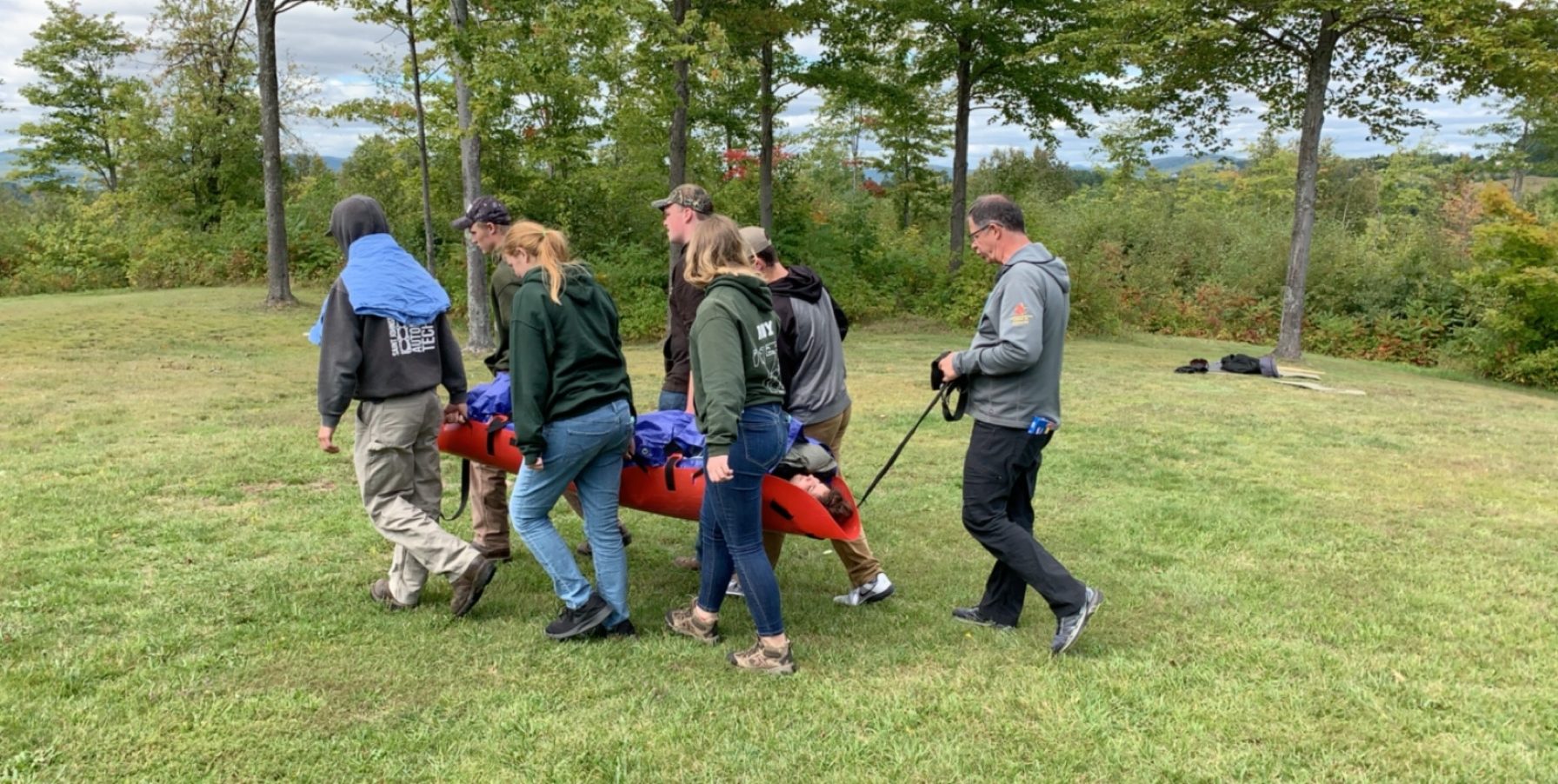
By Jessica Bakowski & Chris Dussault
Sometimes things don’t go as planned. Sometimes an errant trip, slip, or fall can sideline an otherwise perfect day. Since we spend so much time outside- with students- we need to expect the unexpected. This week, Field Semester students learned how to survive difficult situations in the wilderness. By participating in a 3 day long, professional level training on wilderness first aid, students earned their SOLO WFA certification and how to avoid, assess and handle dangerous situations in remote areas. Students learned specific hands-on techniques from local wilderness first aid responder and SOLO Instructor John Kasenska.
This course also brought our students together as a group as they played out rescue scenarios that involved collaborative effort such as group carries, splint tying, and evacuations. Students learned how to perform patient evaluations and how to ask the right questions in order to assess injury, discomfort, and urgency level. Students also read about and discussed local stories of tragedy and survival in the White Mountains and Adirondacks Mountains in order to analyze which decisions and scenarios contributed to an accident, injury, or death, and how they could potentially have been avoided.
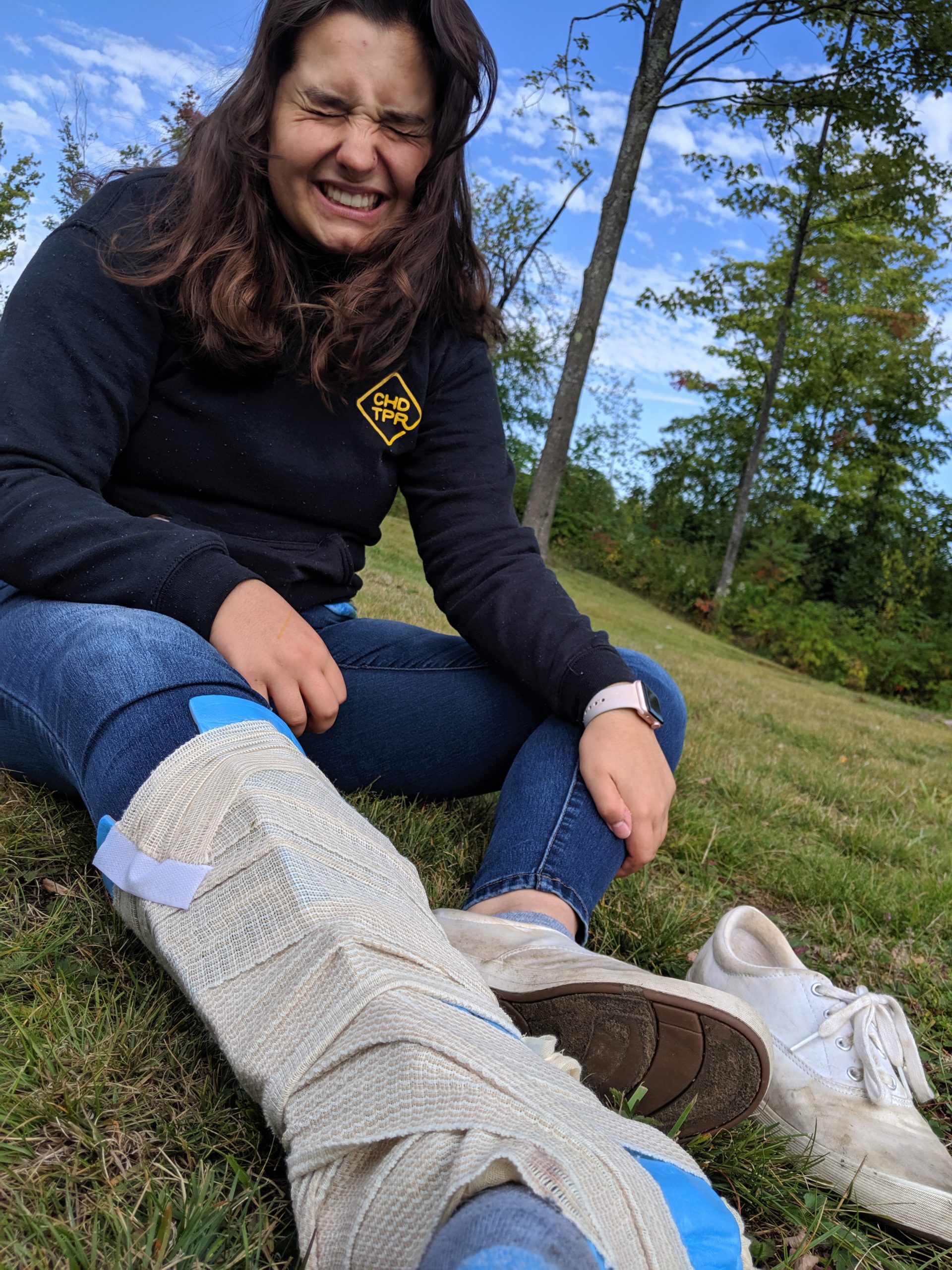
While none of us like to think about an outing going wrong, we feel that it is important for students to be equipped with the skills and knowledge to both prevent dangerous situations and deal with them when and if they happen.
Monday, 9/9
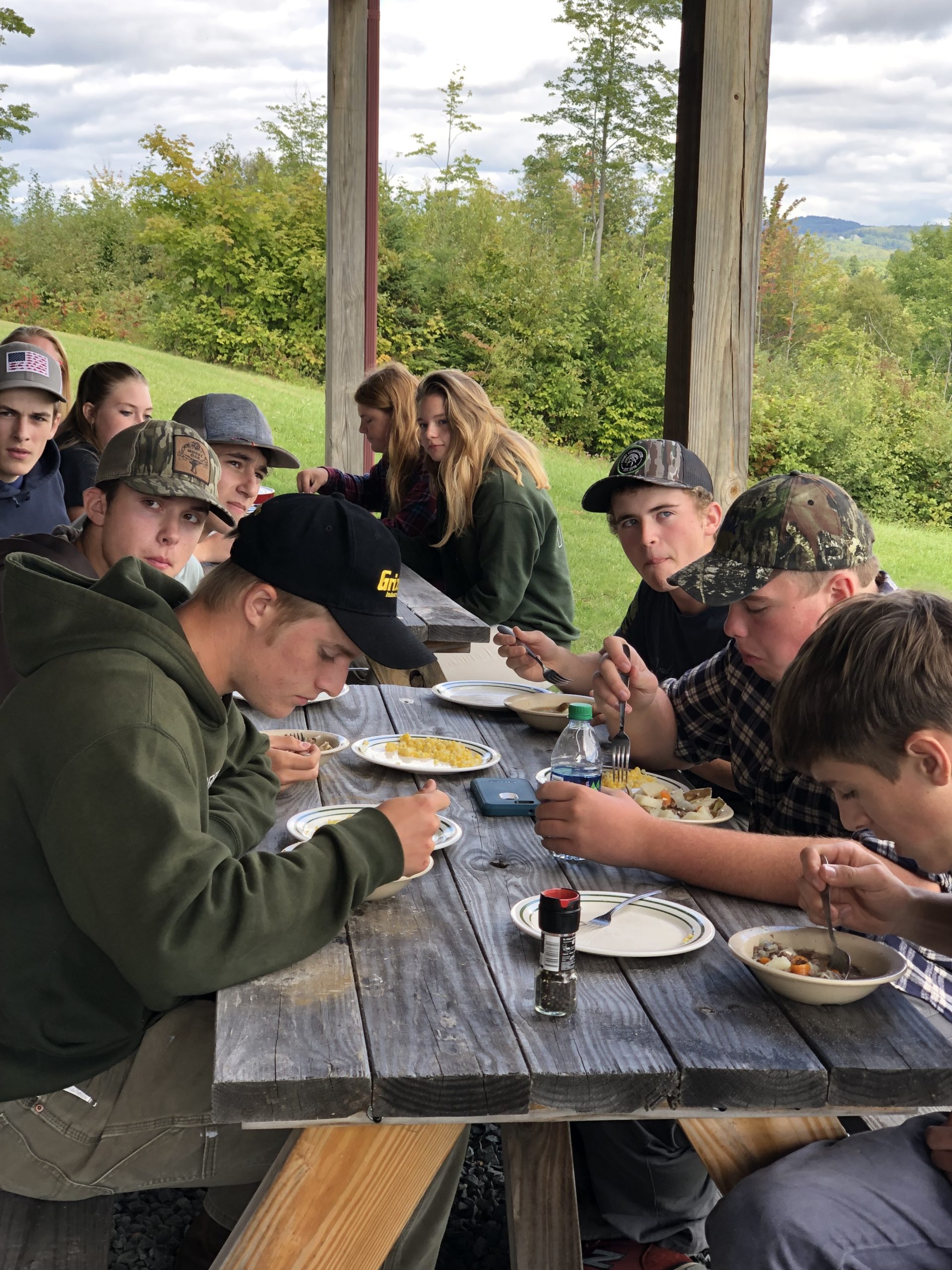
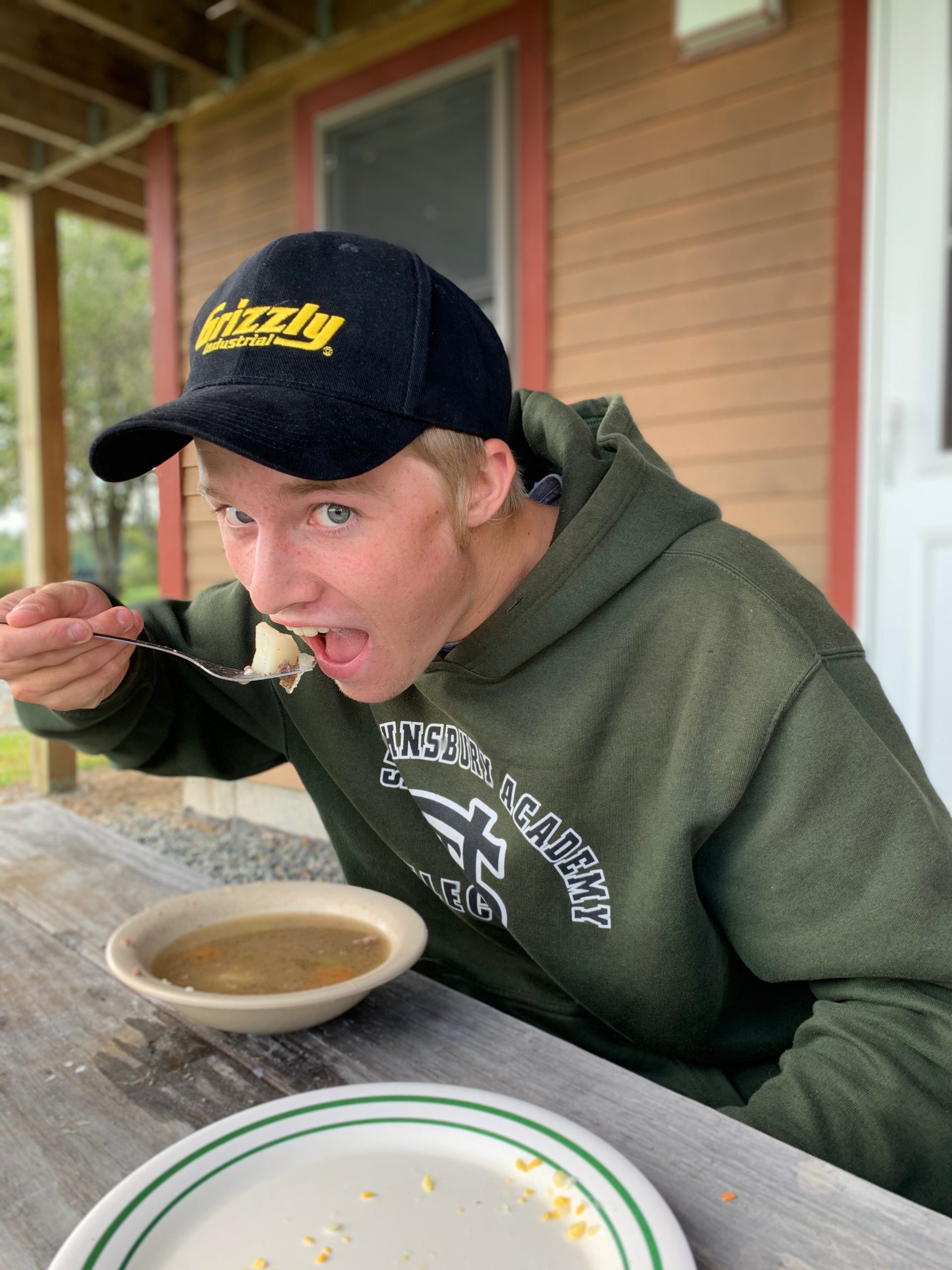
Every week on Monday, our class comes together to make a family style meal with veggies and produce from a CSA (community supported agriculture) that we get from Pete’s Greens. Because it is only greens and veggies, some students volunteer to bring in meat. Mr. Bentley brought some ground bison and Sequoia brought some bear meat. Before we get cooking, we always discuss a food plan containing what we’ve got from the CSA. This week we had corn, carrots, onions, spinach, garlic, jalapeno peppers, and with the additional meat, we decided that a stew would be the easiest meal. After everything had been cooked, we set out bowls and everyone sat down at the picnic tables outside to enjoy the meal as a group.
Tuesday, 9/10
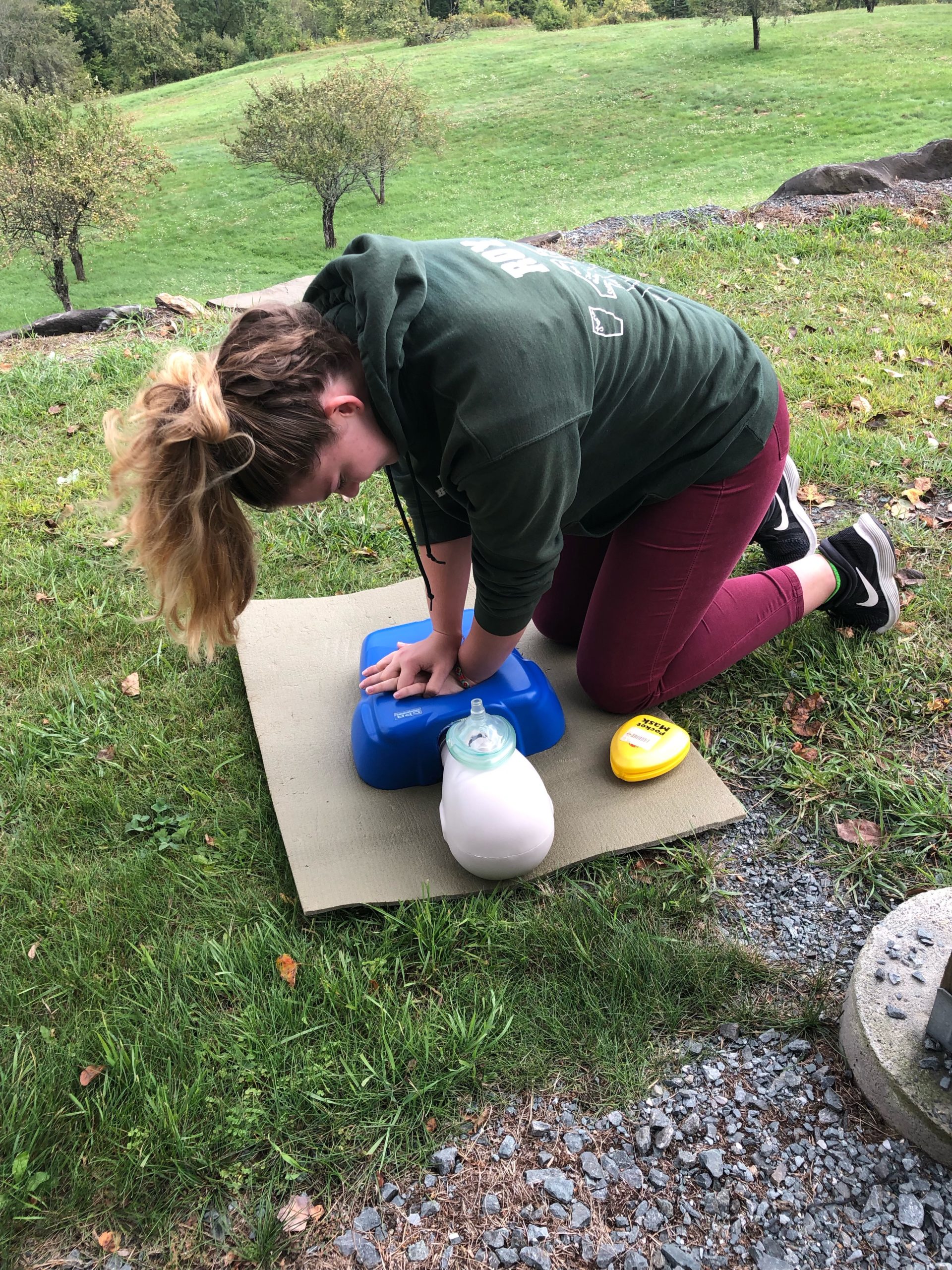
On Tuesday afternoon, John Kascenska, a certified SOLO instructor, joined the Field Semester class to teach CPR and Wilderness First Aid. Along with many other valuable wilderness skills, the first skill Mr. Kascenska went over was how to save a life. We learned how to properly check if a patient is in need of cardiopulmonary resuscitation (CPR). To do this, you must first see if they respond to verbal stimulation. If they respond, they are not in need. However, if they don’t respond, you must use a pain stimulation technique which can be done by pinching the pressure point on the shoulder, or a firm rub on the sternum. If there is no response, you must check the airway. If the airway is blocked, you must turn the patient onto his or her side to get the object out of the way. If the airway is clear, you may proceed to check if the patient is breathing. This can be done by either placing a hand on their stomach, or just watching their stomach to see if it moves up and down. If they are still not breathing, you must then check for a pulse. If you feel a pulse, CPR is not necessary. If you don’t feel a pulse, you may begin chest compressions. These should be done at 30 compressions, followed by 2 rescue breaths. The rescue breaths are provided through a CPR mask. This mask must be sealed tightly to their face in order for all of the oxygen to reach them. The mask prevents the spread of potential diseases. The compressions paired with the rescue breath should be done in five cycles. Then you check if the patient is breathing again. If they aren’t you must begin the five cycles again. This pattern will go on until an EMT or further help arrives.
Wednesday, 9/11
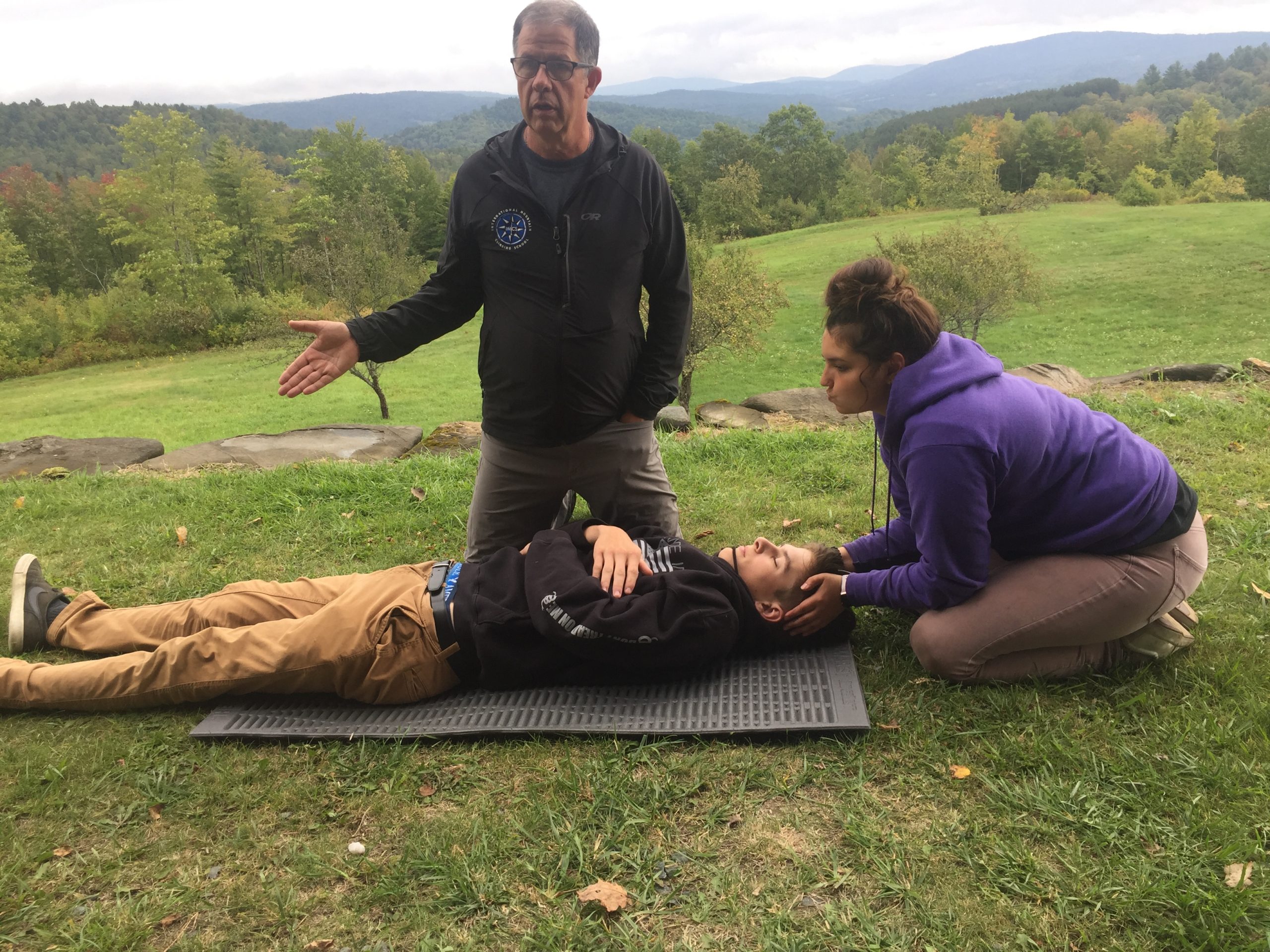
On Wednesday we went over patient assessments with Mr. Kascenska. In this photo, one student plays the role of an unconscious patient, while the other student and Mr. Kascenska conduct the patient assessment. While one held the patient’s head steady (incase of spinal injury) the other checks breathing, pulse, airways, and the “chunk check,” which looks for any major injuries and makes sure that everything is in the correct place. After that, the two worked together to roll the patient over (keeping spine as straight as possible) to check for spinal injuries on along the back. The patient assessment should be used in any situation in which someone, conscious or not, gets hurt. By learning how to do a basic patient assessment, the whole class feel like more prepared for any outing.
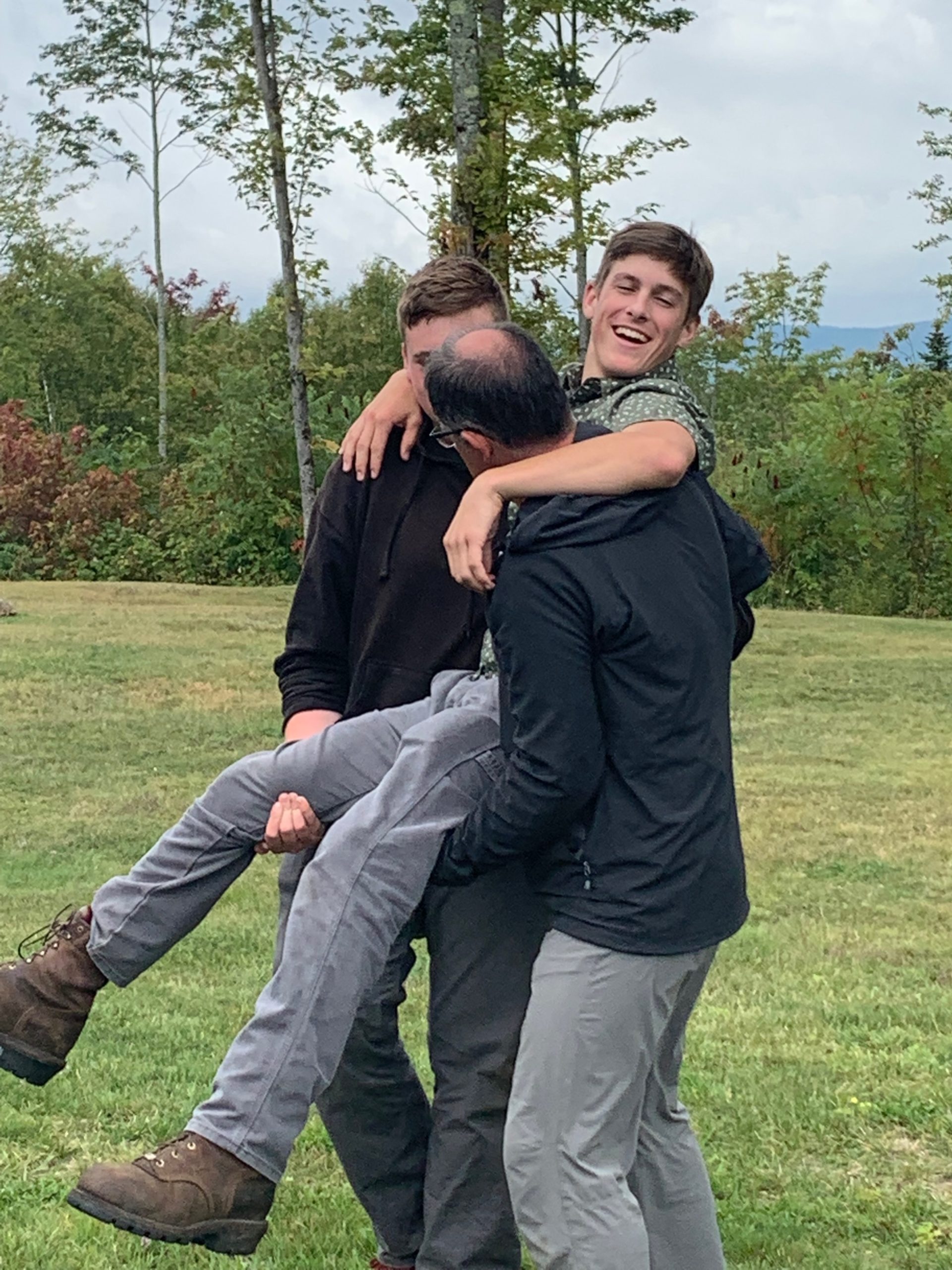
In this picture, Mr. Kracenska had us practice how to properly carry a patient with an ankle and leg injury back to our “base.” We carried our patient in such a way that would avoid injury to those doing the lifting and prevent further injury to the patient. We then had other students switch roles and repeat the process.
Thursday, 9/12
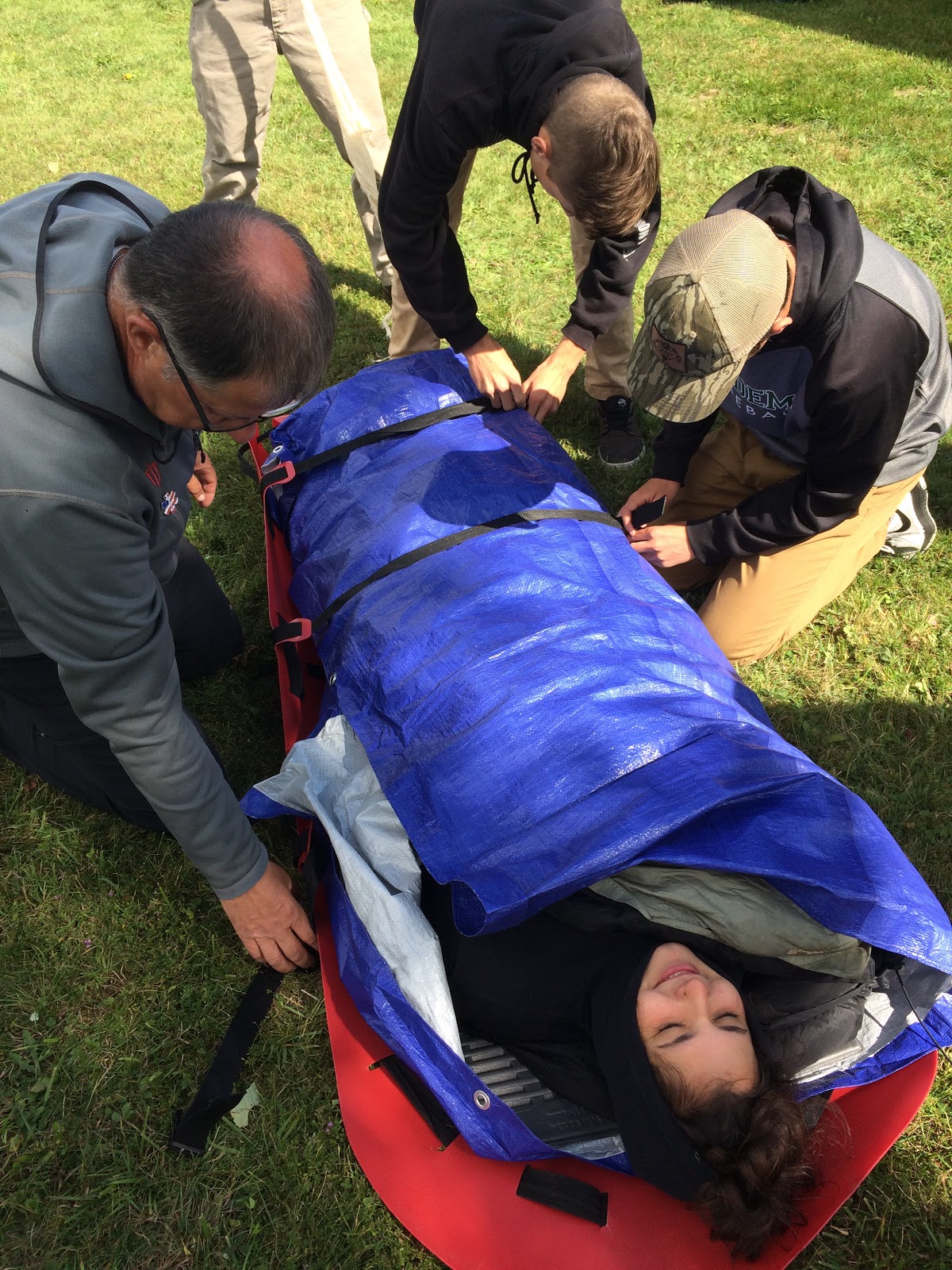

On Thursday afternoon, one of the very last things that we were shown how to do was the hypo-wrap, aka: the human burrito. In a case where patient is showing symptoms of hypothermia, the hypo-wrap is used to create an excellent environment for warming them up. It allows the patient to store the heat that they produce. There are several layers that go into the insulation and protection of the patient, including a sleeping bag and tarps. Once all wrapped up, the patient is then placed onto a sled with several handles all around it, and carried around until the patient is out of harm’s way and in a safer location. If we were ever in a situation where there was someone who needs help to carry a person or wrapping them up, we would all know exactly what to do. While this treatment requires leadership, all involved would need to move and work together as one.

